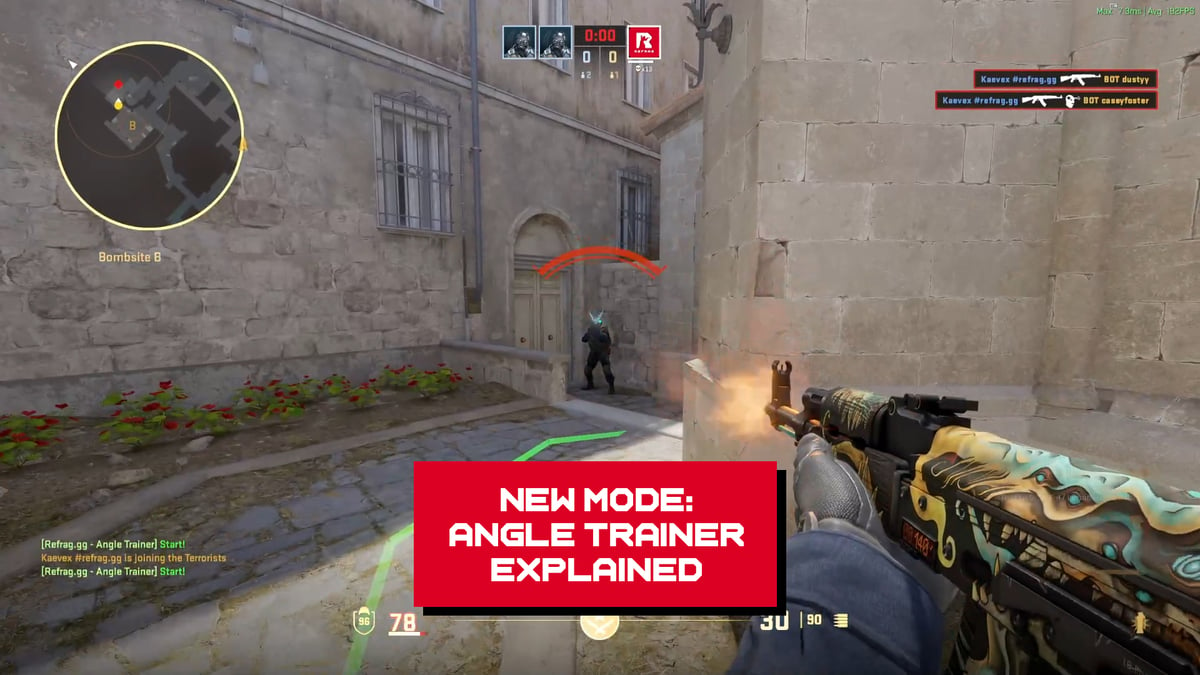Print Fix Hub
Your go-to source for everything print-related, from troubleshooting to tips.
Perfecting Your Prefire: Angles That Will Leave Opponents Guessing
Master the art of prefire angles and keep your opponents guessing! Unlock winning strategies in our latest blog post.
Mastering the Art of Prefire: Essential Angles for Competitive Play
In competitive gaming, particularly in first-person shooters, mastering the art of prefire can be a game-changer. Understanding the map layout and recognizing common angles where opponents tend to emerge can significantly enhance your chance of securing eliminations before the enemy even has a chance to react. To excel in prefire, players must familiarize themselves with essential angles, such as:
- Corner Peaks: Anticipate opponents peeking around corners and pre-aim at these spots.
- Common Hideouts: Identify frequent hiding spots that enemies use and fire preemptively.
Perfecting your prefire technique not only increases your kill potential but also instills fear in your opponents, making them less likely to challenge you. Take the time to practice different angles during training sessions, as this will allow you to establish muscle memory. Additionally, utilizing audio cues to predict enemy movement can aid in your prefire strategy. For ultimate effectiveness, consider some of these tips:
- Stay Silent: Reduce your footstep noise to avoid giving away your position.
- Map Knowledge: Memorize peak angles and common engagement locations across different maps.
- Adapt Quickly: Be ready to adjust your aim based on enemy movements.

Counter-Strike is a popular first-person shooter game that pits teams against each other in various scenarios, such as hostage rescue or bomb defusal. Players aim to achieve objectives while competing against opponents, and mastering the game requires skill, strategy, and teamwork. To stay competitive, many players are interested in how to check cs2 stats to track their performance and improve their gameplay.
The Science Behind Effective Prefire: Key Angles to Outmaneuver Your Opponents
Effective prefire techniques are grounded in the understanding of opponent behavior and game mechanics. By anticipating where an enemy is likely to emerge, players can outmaneuver their opponents and gain a tactical advantage. Key strategies include analyzing map layouts and utilizing common sightlines. For instance, when defending a site, knowing the angles that players frequently take can help you pre-aim your crosshair and minimize reaction time. This approach not only increases your chances of landing successful shots but also enhances your awareness of potential enemy movements, making it essential for competitive gameplay.
Moreover, integrating the physics and timing of the game into your prefire strategy plays a crucial role in achieving success. Consider the key angles where opponents often hide; aiming slightly higher or lower based on known player positions can drastically improve your hit rate. Practicing flick shots and quick adjustments can lead to better pre-aiming, ensuring you're ready to engage as soon as you spot an enemy. Ultimately, mastering the science behind effective prefire not only enhances individual skills but also contributes to the team's overall performance.
Top 5 Mistakes Players Make with Prefire Angles and How to Avoid Them
In competitive gaming, understanding the concept of prefire angles is crucial for gaining an edge over your opponents. However, many players make critical mistakes that can cost them valuable kills. One common mistake is failing to account for enemy positioning. Players often prefire at angles without considering how enemies might be positioned, which can lead to wasted shots and exposure to return fire. Another frequent error is not practicing prefire angles adequately; players might rely too heavily on instinct rather than developing a tactical approach to their angles, which results in predictable gameplay.
To avoid these pitfalls, players should start by mapping out common prefire angles on each map and assessing where opponents are likely to be. Creating an ordered list of crucial angles can help you systematically practice them in different scenarios. Additionally, maintaining good communication with your team can reduce risky prefire attempts as they can provide intel and cover. Lastly, don’t forget to analyse your gameplay; reviewing your matches can provide insights into when and where you made mistakes with prefire angles, allowing you to refine your tactics for better future performance.